Domain and range is heavily emphasized in the Algebra 1 TEKS. The concept is found in two readiness standards and a supporting standard. Having taught it, I thought I would share some tips from my failures and successes.
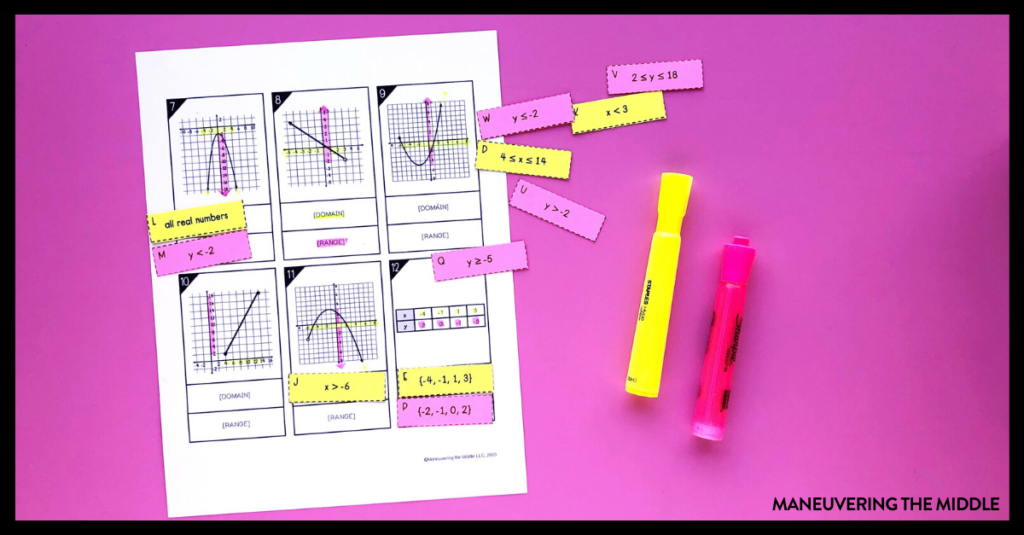
A.2(A) determine the domain and range of a linear function in mathematical problems; determine reasonable domain and range values for real‐world situations, both continuous and discrete; and represent using inequalities
Looking at former test questions helps me envision how standards can be tested. Here is an example from the 2017 Released STAAR test:
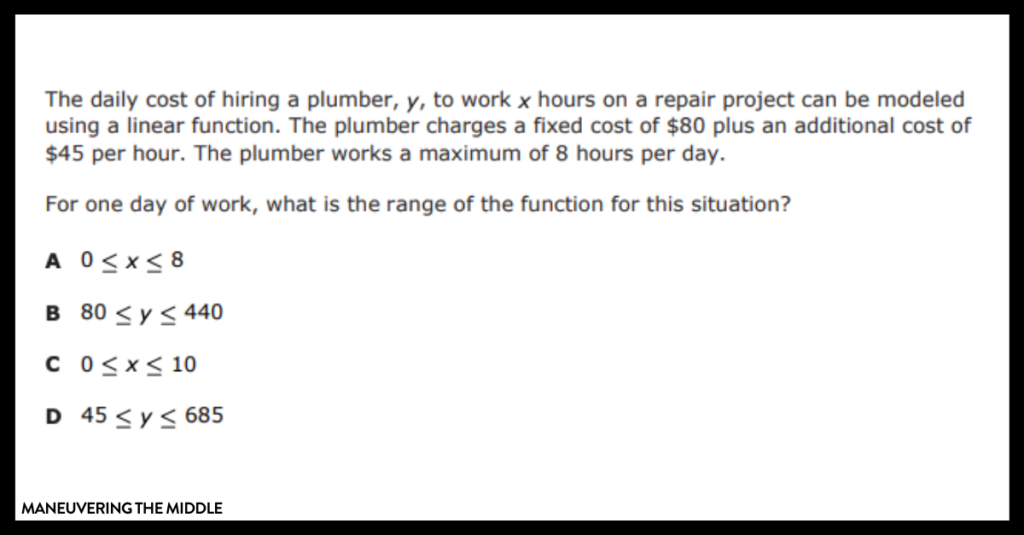
A.6(A) determine the domain and range of quadratic functions and represent it using inequalities
This test question example from the 2018 Release STAAR test:
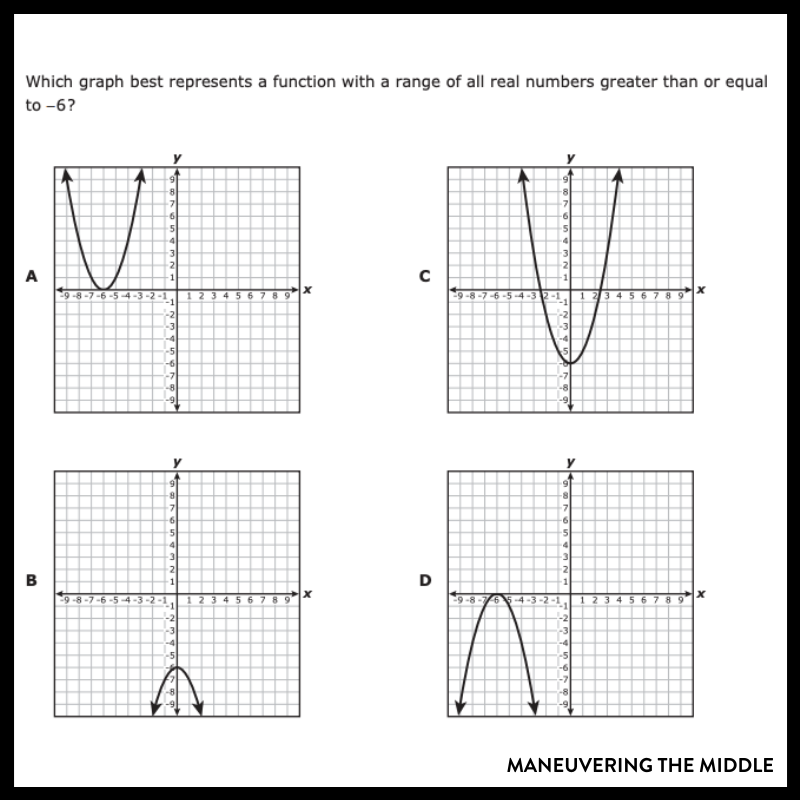
Let’s jump into some ways that will help your students master domain and range!
1. Vocabulary is Key
This concept introduces new vocabulary that is necessary for using the skill. Make sure students have a solid understanding before moving forward. Don’t have them just copy it down. When was the last time you remembered something after writing it down one time? Encourage them to say it to a partner. Have students write a left to right arrow whenever they see the word domain and a vertical arrow whenever they see range. Make this sticky!
I relied heavily on reading Math Equals Love when I taught Algebra 1 and 2. Sarah taught me to use the mnemonic tool DIXIROYD (which she credits to a unknown blog reader) originally to help students remember that Domain is the set of all Input values, X values, and the Independent variable, while the Range is the set of all Output values, Y-values, and the Dependent variable. You know a mnemonic device is good when you rely on it just as much as your students.
Update 7/28/2026: Maneuvering the Middle now has a Middle School Math + Algebra 1 Word Wall.
As you can see in the video below, our Word Wall includes 190 essential math terms, their clear-cut definitions, and their visual representations.
We’ve included Spanish translations for all terms and definitions, ensuring a supportive and accessible learning experience for English Language Learners.
They were designed to be minimal prep and flexible to customize the formatting to suit your students’ unique needs.
2. Scaffold over a Few Lessons
As teachers, we are all guilty of jumping to an example that students are not ready for, which can cause them to become overwhelmed and shut down. Or worse, they develop false confidence and do an entire set of problems incorrectly. I thought domain and range was really intuitive, so I tried to cover everything in one class period and my students were lost.
This skill requires scaffolding. I recommend starting with finding domain and range from tables and mappings first. Move to determining the domain and range from word problems or equations by creating an input and output table. Finally, move to graphs in this order — discrete graphs, graphs with endpoints, and then graphs with arrows. Interval notation can be tricky for students, so make sure to review inequality symbols too.
3. Tools are Your Friend
I combed through the 2017 and 2018 STAAR tests and out of all the domain and range problems, 80% used a graph. Students have to be able to determine the domain and range by looking at a function on a graph. I recommend having students annotate the graph by use of colored pencils or highlighters. I have seen this done two ways.
- Highlight the interval of the domain and range on the x and y axis.

- Draw a box. Though I think this makes infinity less clear.

Lastly, I used this foldable from Math Equals Love after my initial domain and range lesson bombed, and it was much more successful.
Ready to teach it!? You can find our Properties of Functions Unit here
If you need hands-on Properties of Functions Activities, you can find them here (+Domain and Range)!
4. Use Technology for Real Time Application
We, like many teachers, are big fans of Desmos. A great lesson for introducing domain and range can be found here. For additional practice, I recommend this lesson. Even if your students do not have access to technology, there is nothing stopping you from projecting these activities and leading a demonstration or discussion with your students. I firmly believe that the more students can manipulate a graph and see its effects, the more memorable or “sticky” that concept becomes!
UPDATE: ALGEBRA I DIGITAL ACTIVITIES ARE NOW AVAILABLE!
I love reading your comments about how you teach math. How do you teach domain and range in your classroom?
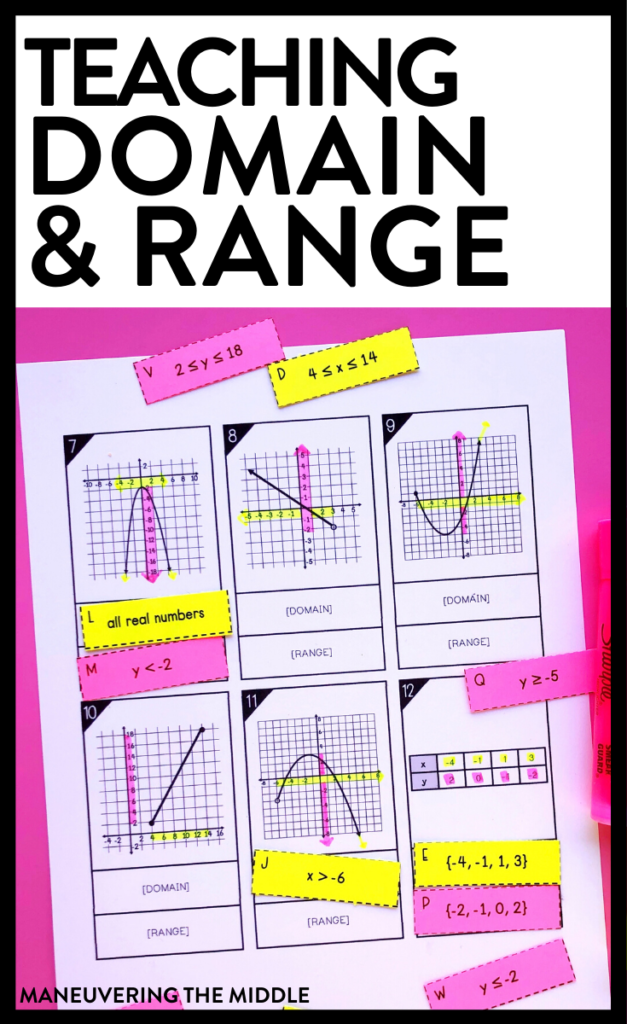
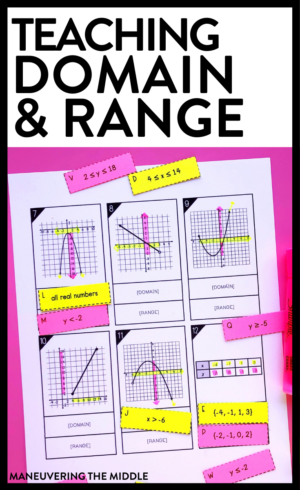
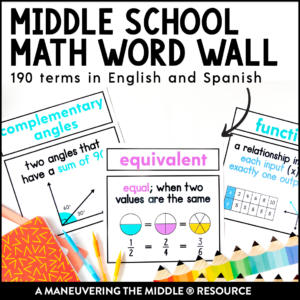
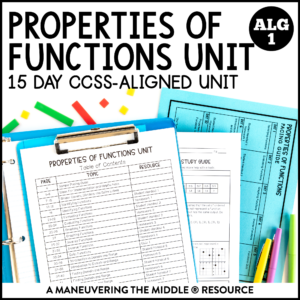
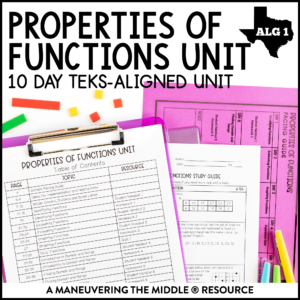
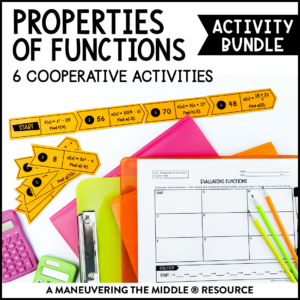
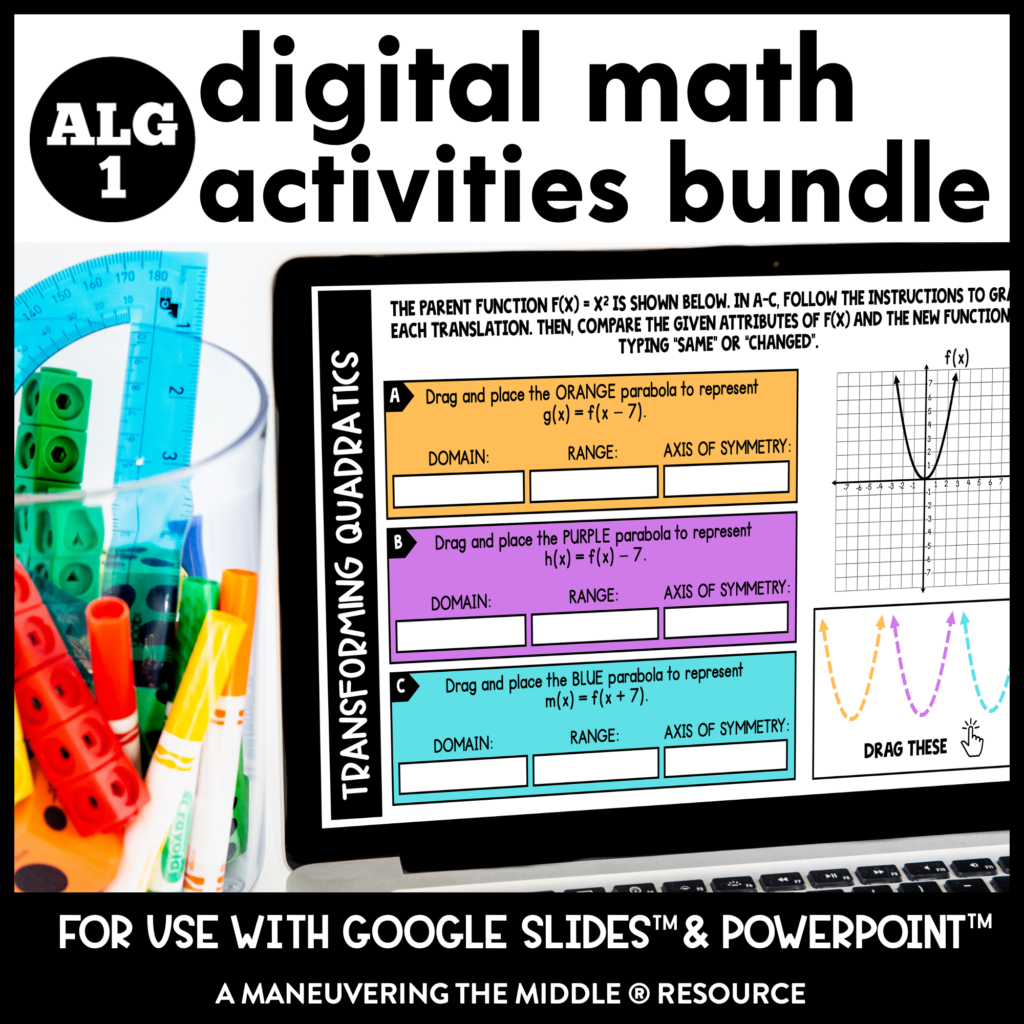
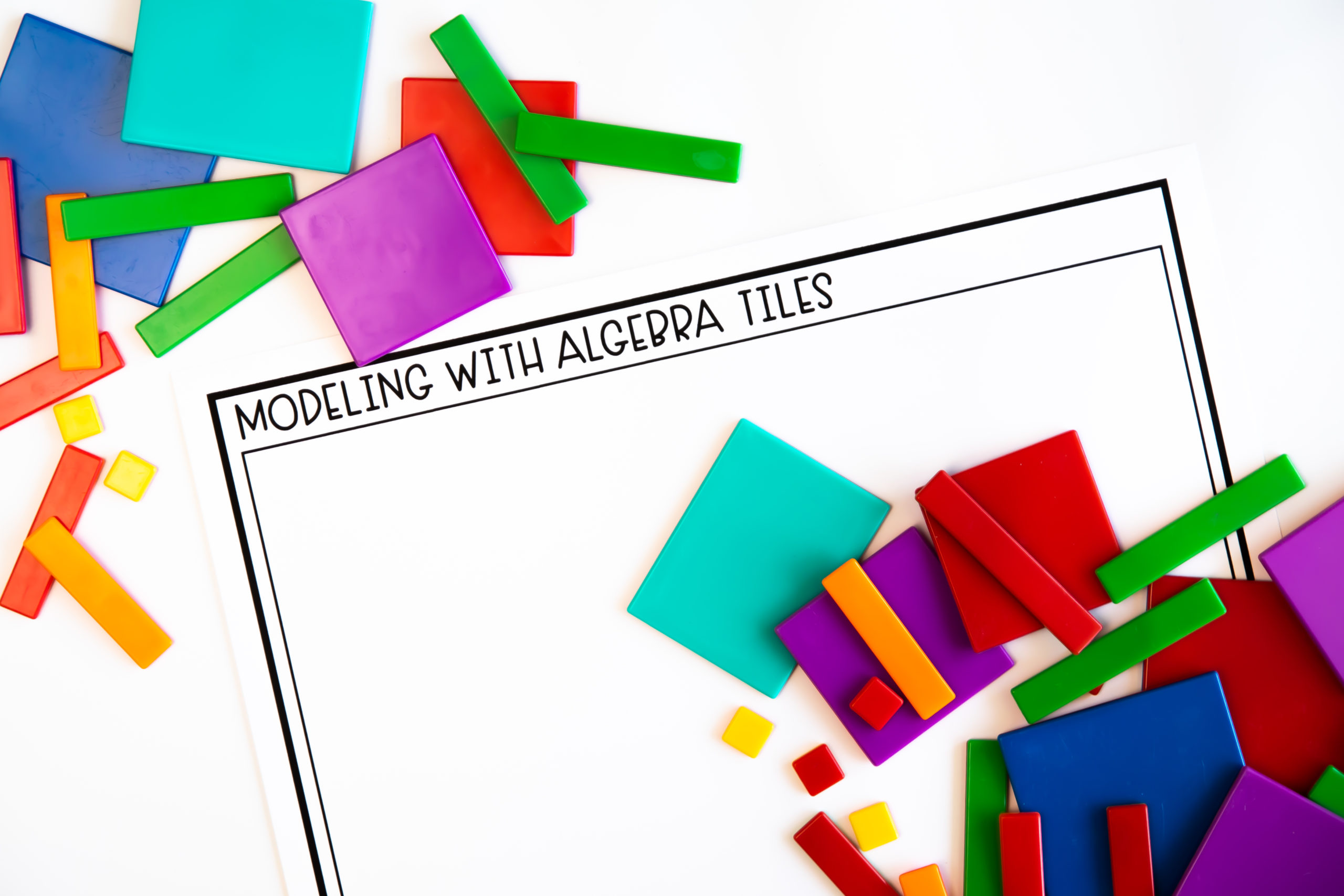
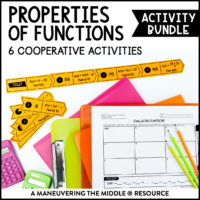

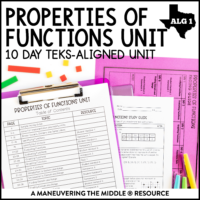
Is your domain and range worksheet from above available in your TPT store? I can’t find it.
Not yet 🙂